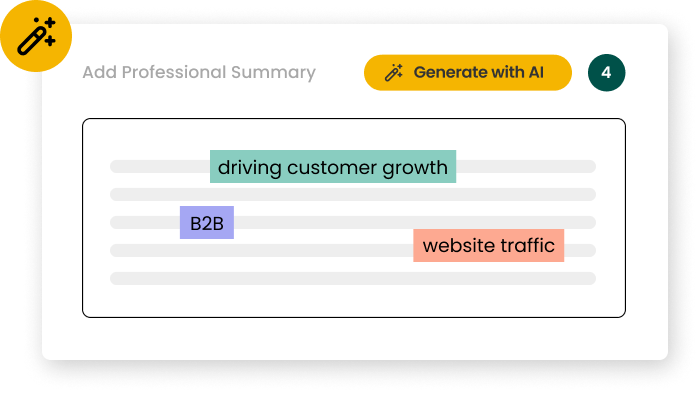Introduction to Product Operations Manager Tools
In the fast-paced realm of product operations, the right tools and software are indispensable assets that drive efficiency and success. For Product Operations Managers, these tools are the backbone of their daily operations, enabling them to streamline processes, make informed decisions, and ensure seamless collaboration across various teams. From sophisticated project management platforms to advanced analytics tools, the right software can transform complex tasks into manageable workflows, ultimately leading to more effective product development and delivery. Mastery of these tools is not just beneficial; it is essential for navigating the intricate landscape of product operations.
Understanding and leveraging these tools is crucial for anyone aspiring to become a Product Operations Manager. Familiarity with industry-standard software provides a solid foundation, equipping future managers with the skills necessary to excel in a tech-driven environment. This knowledge not only enhances their ability to handle day-to-day responsibilities but also demonstrates to potential employers their preparedness and competence in managing product operations. Whether you are an aspiring Product Operations Manager or a seasoned professional seeking to refine your toolkit, a deep dive into these essential tools and software will undoubtedly enhance your efficiency and effectiveness in the field.
Understanding the Product Operations Manager's Toolbox
In the dynamic role of a Product Operations Manager, the choice of tools and software plays a pivotal role in shaping the efficiency and success of product operations. An effective toolbox equips Product Operations Managers with the capabilities to streamline workflows, make data-driven decisions, and foster collaboration across teams.
In this section, we'll give a nuanced overview of the various categories of tools, to shed light on their significance and usage in product operations management. We'll also highlight examples of popular tools within each category, to explain their relevance for Product Operations Managers.
Product Operations Manager Tools List
Find the Important Tools for Any Job
Compare your resume to a specific job description to identify which tools are important to highlight on your resume.
Match Your Resume to a JD
Learning and Mastering Product Operations Manager Tools
As a Product Operations Manager, mastering the tools and software essential to your role is crucial for streamlining processes, enhancing productivity, and driving successful product outcomes. The approach you take to learning and adapting to these tools is just as important as the tools themselves. A strategic, hands-on approach that balances deep dives into functionalities with a broader understanding of each tool's application in the product operations lifecycle is key. Here are some practical steps and learning tips to effectively navigate and master the product operations tools landscape:
Start with a Solid Foundation
Before diving into specific tools, ensure you have a comprehensive understanding of the principles behind product operations. This foundation will help you identify which tools align best with your workflows and objectives. Seek out resources such as product operations blogs, webinars, and foundational courses that offer a broad overview of essential skills and tools in the field.
Embrace Hands-on Learning
Practical experience is invaluable. Begin with free trials or freemium versions to explore features hands-on. Engage in mini-projects that simulate real-world scenarios or use the tool for a side project. This direct interaction will accelerate your learning curve and help you understand the tool's impact on your processes.
Engage with Community Forums and Support Channels
Most tools have active user communities and forums where you can learn from the experiences of others. These platforms are treasure troves for tips, troubleshooting advice, and best practices. Engaging with these communities can also help you stay updated on the latest features and use cases.
Leverage Official Tutorials and Documentation
Start with the tool’s official tutorials, documentation, and quickstart guides. These resources are designed to help you get up to speed with the basics efficiently. They often include best practices and tips that can save you time and effort in the learning process.
Supplement with Online Courses and Certifications
For tools that are central to your role, consider taking online courses or obtaining certifications. These structured learning paths can provide deeper insights into advanced features and strategic applications of the tool. Certifications can also add value to your professional profile.
Practice Continuous Learning
The tech landscape is ever-evolving, and so are the tools used in product operations. Make continuous learning a part of your career development plan. Subscribe to newsletters, follow tool updates, and periodically review your toolset to ensure it remains aligned with your goals and industry trends.
Share Knowledge and Seek Feedback
As you grow in your proficiency, share your knowledge with peers and seek feedback on your tool usage strategies. Teaching others can reinforce your understanding, and feedback can open new perspectives on optimizing tool use.
Tool FAQs for Product Operations Managers
How do I choose the right tools from the vast options available?
Choosing the right tools as a Product Operations Manager starts with identifying your key responsibilities—such as process optimization, data management, and cross-functional collaboration. Focus on tools that enhance efficiency and are widely adopted in the industry. Seek feedback from colleagues and industry forums, and prioritize tools that offer seamless integration with your existing systems. This strategic approach will help you select tools that significantly enhance your operational effectiveness.
Are there any cost-effective tools for startups and individual Product Operations Managers?
For Product Operations Managers in a fast-paced environment, mastering new tools swiftly is essential for streamlining operations and enhancing efficiency. Prioritize tools that align with your immediate operational needs. Engage in interactive tutorials and utilize platforms like Udemy or LinkedIn Learning for targeted courses. Join user communities for practical insights and tips. Apply these tools in real-time projects to gain hands-on experience. The objective is to leverage these tools to optimize processes, improve team coordination, and drive operational excellence.
Can mastering certain tools significantly enhance my career prospects as a Product Operations Manager?
Staying current with the latest tools and technologies as a Product Operations Manager involves continuous learning and active community participation. Subscribe to industry-specific newsletters, join product operations forums, and attend relevant webinars or conferences. Engage with peers in the field to exchange insights and practical applications of new tools. Cultivating a habit of ongoing education and networking will ensure you remain at the forefront of product operations practices.
Up Next
Product Operations Manager LinkedIn Guide
Learn what it takes to become a JOB in 2024


